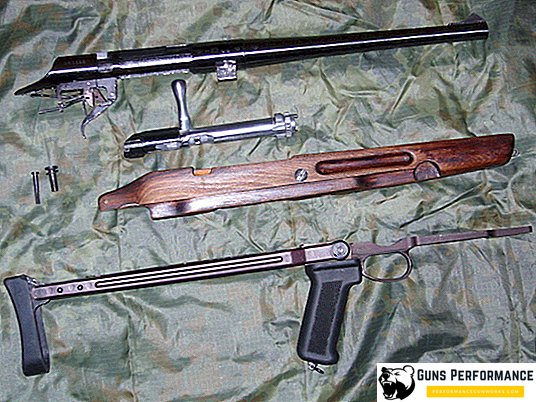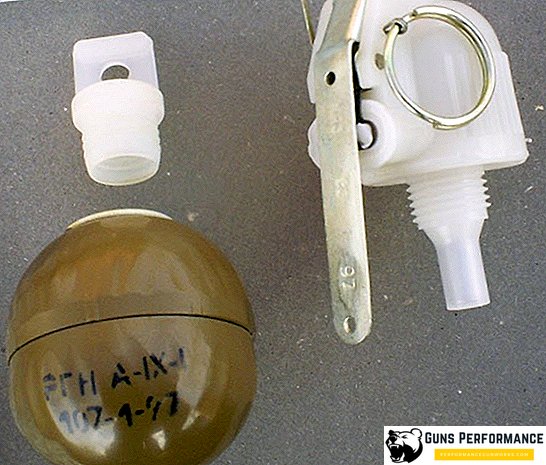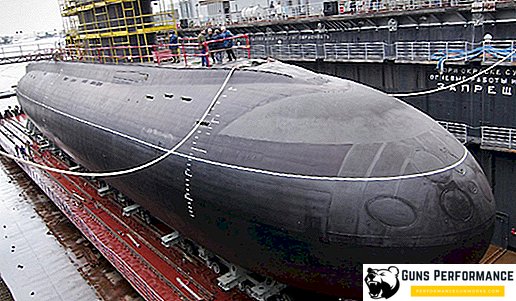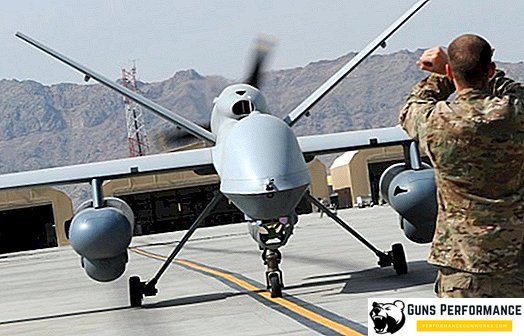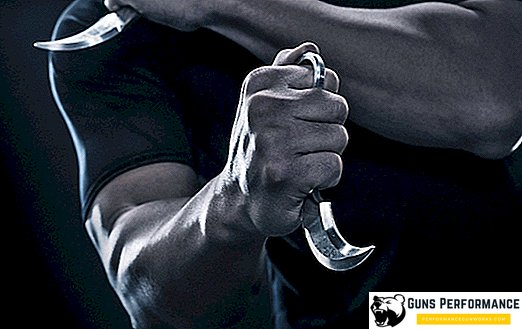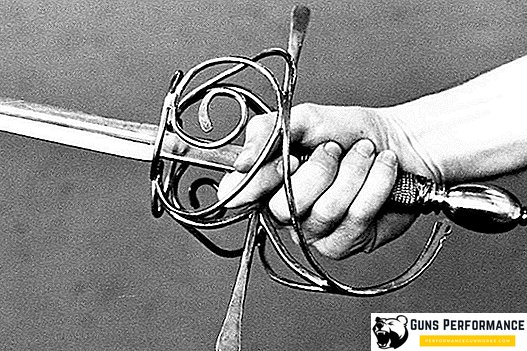Among the many types of small arms used during World War II, the Shpagin submachine gun (PPSh-41) is the most famous. This weapon can be safely called one of the symbols of the war, the same as the T-34 tank or "Katyusha". PPSh appeared on the very eve of the Great War and became one of the most widespread types of small arms of the Red Army. He went along with the Soviet soldier throughout the war and ended it in Berlin, and its simplicity and manufacturability made it possible in the shortest possible time to arm millions of fighters, which played a crucial role during the war.
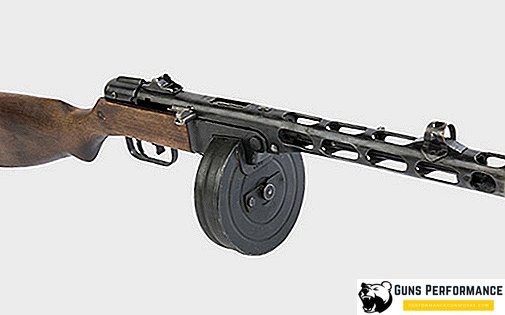
History of creation
Submachine guns (we sometimes call them machine guns) appeared during World War I, together with tanks, chemical weapons and machine guns. And if the machine gun was the ideal defensive weapon of the time, the submachine gun was designed as an offensive type of weaponry.
The first drawings of a rapid-fire weapon under a pistol cartridge appeared in 1915. According to the developers, this weapon should be useful to the advancing troops, due to the high rate of fire and portability. Machine guns of that time had impressive dimensions and weight, and moving them along with the advancing troops was not easy.
Drawings of weapons of a new type of weapon were developed in many countries: Italy, Germany, the USA and Russia, and the period between the two world wars became the heyday of these small arms.
There were two concepts of automaton design. According to the first, the submachine gun was a reduced and lightweight analogue of a conventional machine gun. He was often equipped with bipods, a long interchangeable barrel, sights, allowing to shoot at a few hundred meters. A typical example of such use was the Finnish Suomi machine gun, which was effectively used by the Finnish army in the war with the USSR.
Another concept was to equip auxiliary units with submachine guns, second-line fighters, officers, that is, machine guns were considered as an auxiliary weapon, the option of replacing the pistol.
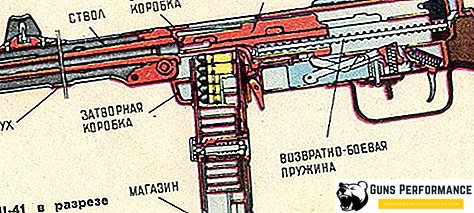
In the USSR, held a second point of view. The development of submachine guns began in the mid-20s. 7.63 × 25 Mauser, with a bottle-shaped sleeve, was chosen as the patron for the future automaton. In 1929, a competition was announced for the development of a new weapon. The drawings began to be prepared by the best designers of the country, among them was Vasily Alekseevich Degtyarev, whose submachine gun was adopted in 1934.
It began to be produced in relatively small batches, since the Soviet military leadership of that time considered the assault rifles to be exclusively auxiliary, police weapons.
This opinion began to change after the unsuccessful Finnish campaign, in which the Finnish troops successfully used submachine guns. Rough terrain was perfect for the use of automatic weapons. The Finnish submachine gun “Suomi” made a great impression on the Soviet military leaders.
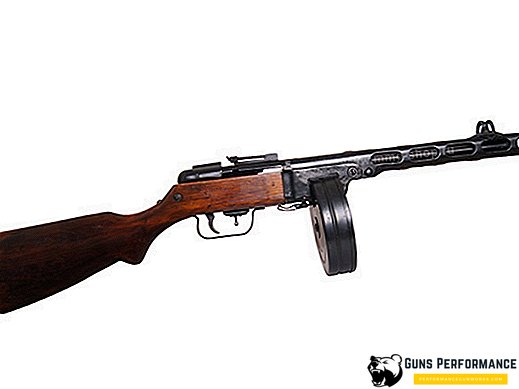
The Soviet military leadership took into account the experience of the Finnish war and decided to create a modern submachine gun under the aforementioned Mauser cartridge. The development was entrusted to several designers, including Shpagin. The designers had to create a weapon no worse than the Degtyarev machine gun, but at the same time it is much more technological, simpler and cheaper than it. After state tests, the Shpagin machine gun was recognized as the most satisfying of all requirements.
From the first days of the war, it turned out that these weapons were very effective, especially in conditions of close combat. A large-scale production of PPSh-41 was deployed at once in several factories, and only until the end of 1941 more than 90 thousand units were produced, and during the war years they produced another 6 million automata of this type.
The simplicity of the design, the abundance of stamped parts made PPSH-41 cheap and easy to manufacture. This weapon was very effective, had a high rate of fire, good accuracy and high reliability.
A 7.62 mm round cartridge possessed high speed and excellent penetrating ability. In addition, the PPSh-41 was amazingly tenacious: more than 30 thousand bullets could be fired from it.
But the most important factor in wartime conditions was the manufacturability of assembling these weapons. PPSH-41 consisted of 87 parts, the production of one product took only 5.6 machine hours. Exact processing required only the barrel and partially the shutter, all other elements were made using stamping.
Device
Submachine gun Shpagin created chambered for caliber 7.62 mm. Weapon automatics works according to the “free shutter” scheme. At the moment of the shot, the bolt is in the extreme rear position, then it moves forward, sending the cartridge into the chamber, puncturing the cap.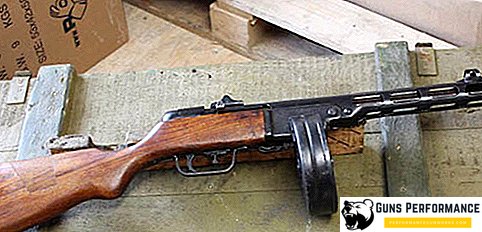
The percussion mechanism allows you to fire both single shots and bursts. The fuse is on the gate.
Receiver box merges with the barrel casing, which has a very interesting design. The characteristic rectangular holes are made in it, which serve to cool the trunk, in addition, the front oblique cut of the casing is covered with a diaphragm, which makes it a muzzle brake-compensator. It prevents the barrel from being picked up when fired and reduces recoil.
In the receiver is a massive bolt and return-combat spring.
First, the sights consisted of a sector sight, then it was replaced with a throw-over one with two values: 100 and 200 meters.
A considerable time PPSH-41 was completed with a drum shop with a capacity of 71 rounds. It was completely analogous to the PDD-34 machine shop. However, this store is not proven at its best. It was heavy, difficult to manufacture, but most importantly - unreliable. Each drum shop was driven only by a certain machine gun, cartridges were often jammed, and if water got into the shop, then in the freezing weather he froze tight. Yes, and his equipment was a rather complicated matter, especially in combat conditions. Later it was decided to replace it with a rozhkov magazine with a capacity of 35 rounds.

The box of the machine was made of wood, most often used birch.
A version of the Shpagin submachine gun was also developed for a cartridge of 9 mm caliber (9x19 Parabellum). For this, in PPSH-41 it was enough to replace the barrel and the receiver of the store.
Advantages and disadvantages of PPSH-41
Disputes about the advantages and disadvantages of this machine continue to our time. The PPSh-41 has both undeniable advantages and disadvantages, which the front-line soldiers often spoke about. Let's try to list both.
Benefits:
- Simplicity of design, manufacturability and low cost of production
- Reliability and simplicity
- Awesome efficiency: at its rate of fire, the PPSh-41 fired up to 15-20 bullets per second (this is more like a volley of shotgun). Under the conditions of close combat, the PPSh-41 was really a deadly weapon; it was not for nothing that the soldiers called it a "trench broom"
- High penetration ability of a bullet. Powerful Mauser cartridge even today can pierce body armor class B1
- The highest among the weapons of this class is the speed of a bullet and the effective range of destruction
- Fairly high accuracy and accuracy (for this type of weapon). This was achieved due to the muzzle brake and significant weight of the machine itself.
Disadvantages:
- High probability of spontaneous shot in the fall of a weapon (common disease of a weapon with a free gate)
- Weak stopping power
- Too high rate of fire, leading to a rapid consumption of ammunition
- The difficulties associated with the drum shop
- Frequent imbalance of the cartridge, leading to seizure of the weapon. The reason for this was the cartridge with a "bottle" sleeve. It is because of this shape that the cartridge is often skewed, especially in the store.
PCA-related myths
Around this weapon formed a huge variety of myths. We will try to dispel the most common ones:
- PPSh-41 was a complete copy of the Finnish Suomi machine gun. It is not true. Outwardly, they are really similar, but the internal design differs quite strongly. You can add that many submachine guns of the time are very similar to each other
- The Soviet troops had a few automata, and all the Nazis were all armed with MP-38/40. This is also not true. The main weapon of Hitler's troops was the Mauser K98k carbine. Submachine gun on the staffing relied one on the platoon, then they began to give out the commanders of the branches (five people per platoon). The Germans were massively equipped with paratroopers, tankers and auxiliary units.
- PPS-41 is the best submachine gun of the Second World War. This statement is also not true. PPS-43 (Sudayev's submachine gun) was recognized as the best gun of that war.
Specifications
| Cartridge | 7.62 × 25 mm TT |
| Store capacity | 71 (disk shop) or 35 (rozhkovy shop) cartridges |
| Mass without cartridges | 3.63 kg |
| Length | 843 mm |
| Barrel length | 269 mm |
| Rate of fire | 900 shots / min |
| Effective range | 200 m |


